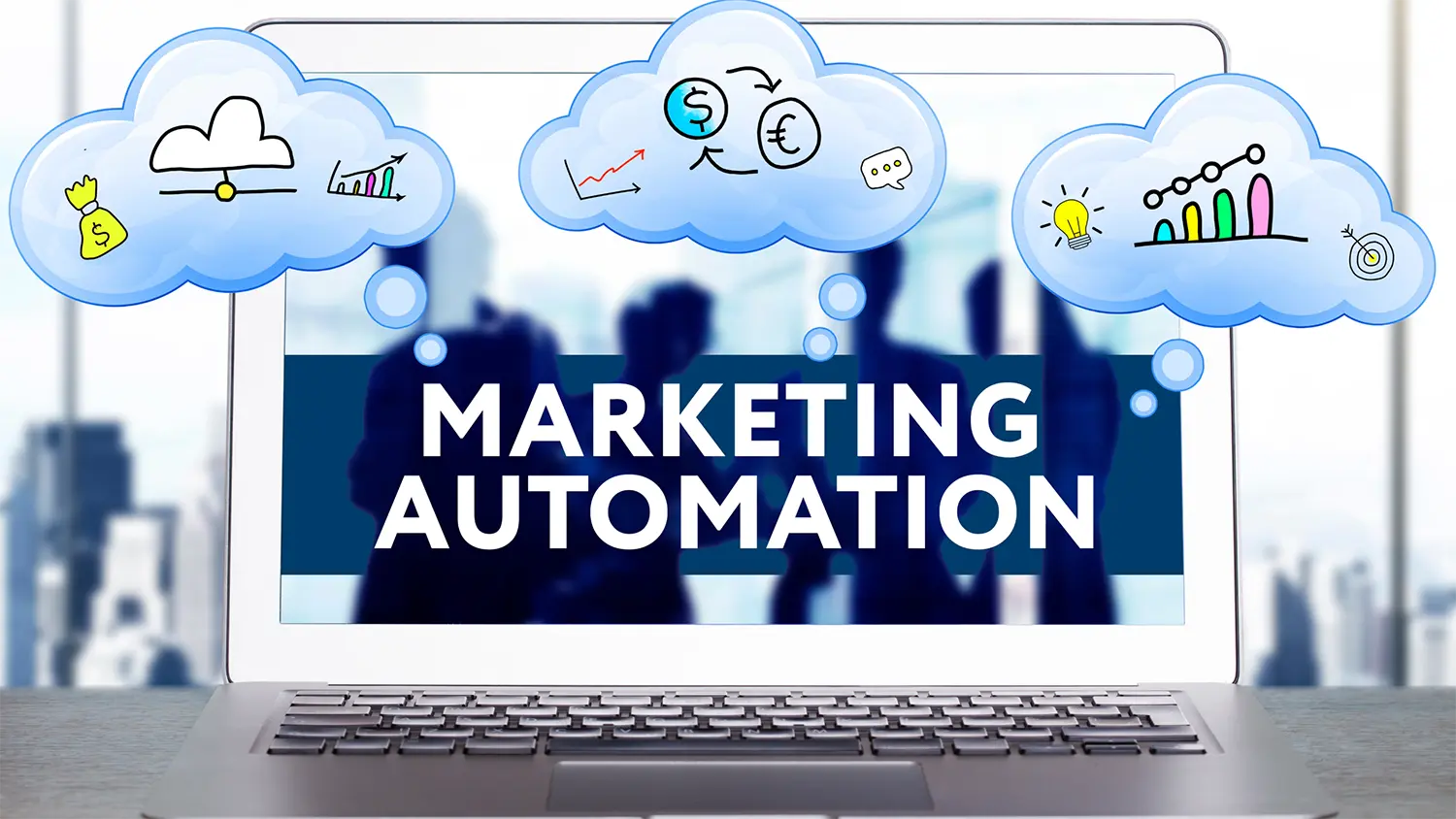
Are small businesses more primed to take advantage of growth strategies than large companies? We believe so. Having worked with organizations of various sizes, we've developed realistic data-driven growth strategies that small businesses can utilize right now to gain an edge. However, this immense growth potential also demands a sophisticated data analysis and strategy implementation approach, which can be challenging for smaller organizations.
At Universal Creative Solutions, we've spent over 15 years embedded in complex business analysis, marketing and consulting, and technology research and implementation, working to develop these data-driven skills throughout our small business clientele. Our experience has shown that while many small business owners rely on basic tools like Google Analytics, this approach often fails to deliver the actionable insights necessary for business growth. We've seen firsthand how data-driven strategies can transform small businesses, making them more competitive and resilient in today's complex marketplace.
Drawing from our experience, we'll discuss how small businesses can implement these strategies to increase sales, optimize their online presence, and create data-driven marketing campaigns that resonate with their target audience. By the end of this article, you'll have a roadmap for transforming your small business into a data-driven powerhouse capable of competing in today's digital marketplace.
What is a Growth Strategy?
A company’s growth strategy is a series of tactics designed to help the company increase its market share. It can include evaluating your products and services and examining how you can promote them better, such as through advertising, customer reviews, sales outreach, marketing, and so on. Growth strategies are the techniques used by companies to expand their scope. A growth strategy is an action plan that allows you to achieve a higher level of success than your current business strategy or market development strategy.
Importance of a Good Growth Strategy
A good growth strategy for your company will not only increase your profit in the long term but will also help you create a competitive advantage over your competitors. Growth strategies are important because they encourage companies to pursue goals that go beyond what is happening in the market today. However, to determine and track growth and performance, it is equally important to use growth indicators and figures when setting goals for your company. Before you start, you should cover how you measure growth and what you want to do to implement these strategies so you can track how well they work. Growth can be measured in terms of sales, profit, as well as a range of other metrics relevant to the type of business. Concrete growth strategies are a crucial cog in the business and are important to consider in decision making and in support of your marketing strategies.
Understanding How the Nine-Box Ansoff Matrix Applies to Growth Strategies
The Ansoff Matrix, originally developed by Igor Ansoff in 1957, has long been a valuable tool for businesses to assess growth strategies. While the traditional Ansoff Matrix consists of four quadrants, an expanded nine-box version offers even more nuanced options for small businesses looking to grow their business.
The nine-box Ansoff Matrix expands on the original by introducing three categories for both products and markets: existing, modified, and new. This creates a 3x3 grid with nine potential growth strategies - some great images and explanations to help with the nine-box Ansoff Matrix can be found here:
- Market Penetration (Existing Products, Existing Markets): This remains the lowest-risk strategy, focusing on increasing sales of existing products to current customers. Small businesses can achieve this through improved marketing, competitive pricing, or enhanced customer service.
- Product Development (New Products, Existing Markets): Small businesses can leverage their understanding of existing customers to create new products that meet evolving needs. This could involve developing complementary products or entirely new offerings.
- Market Development (Existing Products, New Markets): This strategy involves finding new customer segments or geographical areas for existing products. For a small business, this might mean expanding to neighboring towns or targeting a different demographic.
- Diversification (New Products, New Markets): While risky, diversification can offer significant rewards. A small business might consider this if their current market is saturated or declining. For example, a local bookstore might start offering coffee and pastries to diversify its revenue streams.
- Product Modification (Modified Products, Existing Markets): This involves making changes to existing products to better serve current markets. A small craft brewery, for instance, might introduce new flavors or packaging sizes.
- Market Expansion (Existing Products, Modified Markets): Here, businesses slightly modify their target market. A local gym might expand its services to cater to seniors or children, in addition to its regular adult clientele.
- Product and Market Modification (Modified Products, Modified Markets): This strategy involves making changes to both products and markets simultaneously. A small tech company might update its software and start targeting a new industry vertical.
- Modified Product Diversification (Modified Products, New Markets): This involves taking modified products into entirely new markets. A small organic farm might process its produce into preserves and sell them in urban markets.
- Modified Market Diversification (New Products, Modified Markets): Here, new products are introduced to slightly modified markets. A local tutoring service might develop online courses for students in neighboring states.
Choosing the Right Strategy
Choosing the Right Strategy
When using the nine-box Ansoff Matrix, small businesses should consider several factors:
- Resources: Assess available financial and human resources. Strategies like diversification often require significant investment.
- Risk Tolerance: Consider the level of risk the business can handle. Market penetration is generally less risky than diversification.
- Market Conditions: Analyze current market trends and competition to identify opportunities and threats.
- Core Competencies: Focus on strategies that leverage the business's strengths and unique capabilities.
1. Implementing Comprehensive Analytics
Businesses harnessing comprehensive data analysis's power gain a significant edge in the modern digital world. However, the accessibility and accuracy of the data available to small businesses is limited or even worthless, primarily when not implemented correctly, as some marketers claim. These statistics underscore advanced analytics's critical role in driving business success.
However, it's crucial to recognize the limitations of basic analytics tools like Google Analytics. While Google Analytics provides a starting point for understanding website traffic and user behavior, it often presents an incomplete or misleading picture. Some fundamental limitations include:
1. Lack of raw data access: Google Analytics only provides aggregated information, limiting the depth of analysis possible.
2. Data sampling issues: Google Analytics often relies on data sampling for high-traffic websites, leading to inaccurate conclusions, and will often overly anonymize small data sets to protect user privacy, limiting your ability to attribute an outcome accurately.
3. Limited control over data: Users have little control over how Google stores and uses their data, raising privacy and security concerns.
4. Inability to track the entire customer journey: Google Analytics 4 does provide an improved capacity to report on multi-touch attribution across various marketing channels, but you need integrated call-tracking data to see the full picture.
5. Challenges with bot traffic and spam: Basic Google Analytics setups often fail to filter out non-human traffic, skewing metrics.
These limitations highlight the need for small businesses to move beyond basic analytics and embrace more comprehensive, advanced solutions.
2. Leverage Advanced Call Tracking
Advanced call tracking has become essential for small businesses looking to optimize their marketing efforts and improve customer service. Companies can gain valuable insights into customer interactions and make data-driven decisions by implementing sophisticated call-tracking systems to enhance their operations. Despite the rise of digital communication channels, phone calls remain crucial for small businesses because they provide a human connection, build customer trust, and can quickly resolve complex issues. Phone calls also have a higher conversion rate than web clicks, especially when dealing with more expensive or complex products.
How call tracking works
Call tracking systems use unique phone numbers to track the source of incoming calls and should be a part of every small business' marketing strategy. In our client's marketing implementation, we use a system that assigns a unique phone number to each marketing campaign or channel or a dynamic number pool that provides a unique number to simultaneous website visitors to identify the visitor's marketing source.
When customers call these numbers, the calls are automatically routed to our main business line. During these calls, the system records essential information such as the call source, duration, and outcome. The dynamically displayed phone numbers connect how customers found the site to the representative on the phone, a feature known as dynamic number insertion (DNI). Additionally, we implement call recording features for quality assurance and training purposes. These recordings are helpful as they allow the team to ask how customers found our business, often leading to source confirmation or additional marketing sources from an earlier step in the customer journey.
Key insights gained from call analytics
Advanced call tracking provides valuable data that can inform business decisions:
1. Marketing attribution: Identify which marketing channels and campaigns result in phone calls and conversions vs just spam or non-converting leads.
2. Customer journey mapping: Understand the touchpoints that lead to phone calls and how they fit into the customer's experience of a brand.
3. Peak call times: Determine when your business receives the most calls to optimize staffing and resources.
4. Caller demographics: Gain insights into your callers' geographic location and other characteristics.
5. Conversion rates: Track which calls result in sales or appointments to measure the effectiveness of your phone-based sales process.
6. Call quality: Analyze call duration, hold times, and other metrics to improve customer service.
7. Keyword performance: Understand which keywords drive valuable phone calls for paid search campaigns.
Integration with CRM systems
Integrating call tracking with Customer Relationship Management (CRM) systems can provide a comprehensive view of customer interactions:
1. Automatic data entry: Call details are automatically logged in the CRM, saving time and reducing manual errors.
2. Lead scoring: Use call data to score leads based on their engagement and likelihood to convert.
3. Personalized follow-ups: Access call history and notes directly in the CRM to provide more personalized follow-up communications.
4. Sales pipeline management: Track how phone interactions impact deal progression and closure rates.
5. Customer segmentation: Use call data to segment customers based on their behavior and preferences.
6. Reporting and analytics: Generate comprehensive reports that combine call data with other customer interactions for a holistic view of performance.
By leveraging advanced call tracking, small businesses can gain a competitive edge through improved marketing efficiency, enhanced customer experiences, and data-driven decision-making. The insights gained from call analytics can inform strategies across multiple departments, from marketing and sales to customer service and operations.
3. Create a Multi-Touch Attribution Model to Understand the Full Customer Journey
You can edit text on your website by double clicking on a text box on your website. Alternatively, when you select a text box a settings menu will appear. your website by double clicking on a text box on your website. Alternatively, when you select a text box

Implementing a Comprehensive Tracking System
Understanding the Reality of Multiple Touchpoints
CRMs often focus on a single attribution point for leads and opportunities when the reality is far more complex. Customers typically interact with a brand multiple times throughout the marketing funnel before making a purchase decision. A well-designed multi-touch attribution model accounts for these various interactions and assigns appropriate value to each touchpoint. By mapping each touch point, your team can better plan marketing strategies for each stage of the funnel.
Mapping the Customer Journey
Once you have a comprehensive tracking system in place, the next step is to map out the customer journey and build the activities taken at each step to help push customers from one stage into the next. Based on your data, create hypotheses about why your customers take each step in a typical path from awareness to purchase. Validate your theories by speaking directly with customers about their experience and the touchpoints influencing their decisions. Break down the customer journey into distinct stages, typically:
- Top of Funnel (TOFU)
- Middle of Funnel (MOFU)
- Bottom of Funnel (BOFU)
Top of Funnel (TOFU) Activities
TOFU activities are often the first interactions a potential customer has with your brand. These might include:
- Display ads
- Video ads
- Social media posts and ads
- Initial website visits (driven by activities above)
At this stage, customers are becoming aware of your brand and considering whether your product or service is relevant to their needs. The goal here is to create brand awareness and pique interest.
Middle of Funnel (MOFU) Activities
MOFU activities involve deeper engagement as customers further their research. These might include:
- Downloading brochures or whitepapers
- Attending webinars
- Engaging with more detailed content or tools and trials on your website
It's important to note that while some companies might consider these actions as conversions, they're often just steps in the customer's research process. Automating follow-ups at this stage can be effective so that you don't pester a potential customer with a direct call to set up a sales appointment but rather provide them the ability to do that when they are ready:
- Including links to sales meetings in downloadable content
- Offering additional resources on download pages
- Sending follow-up emails with more information
Bottom of Funnel (BOFU) Activities
BOFU activities represent the transition from marketing to sales. These might include:
- Direct sales calls
- Appointment scheduling
- Product demonstrations
However, it's crucial to understand that marketing's role doesn't end here. Continued tracking of the customer journey through this stage can provide valuable insights into optimal follow-up cadence, the effectiveness of marketing messages in closing deals, opportunities for retention marketing, and strategies for encouraging repeat business and referrals.
Continuous Optimization
Creating a multi-touch attribution model is not a one-time task. It requires ongoing analysis and refinement. Even after defining your funnel stages and related customer activities, user interaction with the market changes. That's why it's important to review your data to reassess your strategies through regularly:
1. Identifying the latest influential touchpoints at each stage of the funnel
2. Adjusting your marketing strategies based on these insights
3. Continuously improving the accuracy of your attribution model and confirmations through customer interactions
By implementing a continuously updated multi-touch attribution model, you'll better understand your customer's journey as it changes in real-time, allowing you to make data-driven decisions that optimize your marketing efforts and lead to business growth.
4. Optimize Online Presence for Conversions
Creating a website that effectively converts visitors into customers is crucial for digital business growth. However, focusing on quality conversions that generate revenue is more important than increasing lead volume if more leads simply means burning through cash to achieve the same conversion or revenue outcomes.

Create a Conversion-Focused Website
A conversion-focused website is designed with the primary goal of guiding visitors toward taking desired actions. Key elements include:
- Clear and compelling value propositions above the fold
- Intuitive navigation that guides users through the conversion funnel
- Strategically placed call-to-action (CTA) buttons with persuasive copy
- Trust signals like customer testimonials, case studies, and other forms of social proof
- Mobile-responsive design to ensure a seamless experience across all devices
- Fast loading times to reduce bounce rates and improve user experience
Implement Conversion Rate Optimization (CRO) Techniques
Conversion Rate Optimization (CRO) involves systematically improving different components of your website to increase the percentage of visitors who complete a desired action. Effective CRO techniques include simplifying forms to reduce friction in the conversion process, using persuasive copywriting that addresses customer pain points and emphasizes benefits, implementing live chat or chatbots to provide immediate assistance to potential customers, creating a sense of urgency with limited-time offers or scarcity messaging, and optimizing page layouts to draw attention to key conversion elements.
Use A/B Testing to Improve Performance
A/B testing allows you to compare different versions of web pages or elements to determine which performs better regarding conversions. When conducting A/B tests, test one element at a time to identify what impacts conversion rates. Ensure you have a large enough sample size for statistically significant results and run tests for an appropriate duration to account for variations in traffic and user behavior. Use tools that allow you to segment results by user demographics or behavior for more nuanced insights as often as possible.
Focus on Quality Conversions
Tracking conversions that lead to sales opportunities or revenue is crucial, not just lead volume. To ensure you're optimizing for quality conversions:
- Implement tracking that follows the entire journey from initial contact to sale
- Use customer relationship management (CRM) software to monitor which leads turn into paying customers
- Set up goal values in your analytics platform based on the average value of a converted customer
- Regularly analyze the quality of leads generated and adjust your optimization efforts accordingly
By focusing on these quality metrics, you avoid the pitfall of optimizing for high volumes of low-quality leads or spam submissions. Instead, you can refine your website to attract and convert visitors who are most likely to become valuable customers.
Continuous Improvement
Optimization is an ongoing process. Regularly review your website's performance, gather user feedback, and stay updated on industry trends to continually refine your conversion strategy. By focusing on quality conversions and continuously testing and improving, you'll create an online presence that attracts visitors and efficiently turns them into loyal, paying customers.
5. Utilize Data-Driven Content Marketing
Creating content based on gut feelings or assumptions is no longer sufficient with the volume of content available online. Data-driven content marketing allows you to make informed decisions, optimize your efforts, and create content that resonates with your target audience while driving actual business results.
Create Content Based on Customer Insights
To create content that genuinely connects with your audience and improves conversions, start by analyzing customer data. Use your CRM to track pipeline stage drop-off, review survey results, and monitor customer feedback to understand pain points, preferences, and behaviors. Next, conduct keyword research to identify topics and questions your target audience is searching for online. Review competitor content to analyze what's working for your competitors and find gaps you can fill.
Additionally, your team should implement social listening technology to monitor social media conversations and understand trending topics and customer sentiments. Lastly, leverage analytics data using tools like Google Analytics to identify which topics and content types perform best with your audience. By basing your content strategy on these insights, you're more likely to create content that addresses real customer needs and creates meaningful engagement.
Track Content Performance Beyond Pageviews
While pageviews can indicate reach, they don't tell the whole story. To truly understand content performance:
1. Measure engagement metrics: Track metrics like time on page, scroll depth, and bounce rate to gauge how well your content resonates with readers.
2. Monitor social shares and comments: These indicate how valuable and shareable your audience finds your content.
3. Track conversion rates: Measure how often readers take desired actions after consuming your content, such as signing up for a newsletter or requesting a demo.
4. Analyze user paths: Understand how readers navigate your site after engaging with your content.
5. Measure return visits: Track how often readers return to consume more content, indicating loyalty and interest.
6. Use attribution modeling: Understand how your content contributes to the overall purchase pathways and eventual conversions.
Use Lead Magnets and Gated Content for Lead Generation
Ensure Content Leads to Actual Customers and Sales
To avoid creating content that only generates traffic or low-quality leads:
1. Set clear goals: Define what success looks like for each piece of content (e.g., demo requests, product sign-ups).
2. Implement proper tracking: Use UTM parameters and conversion tracking to attribute leads and sales to specific content pieces.
3. Focus on quality over quantity: Prioritize creating fewer, high-quality pieces that are more likely to convert over high volume of superficial content.
4. Align content with sales: Work closely with your sales team to understand what types of content help close deals.
5. Monitor lead quality: Regularly assess the quality of leads generated by your content and adjust your strategy accordingly.
6. Track content ROI: Calculate the return on investment for your content marketing by comparing the cost of content creation to the revenue generated.
7. Use lead scoring: Implement a system to score leads based on their engagement with your content and fit with your ideal customer profile.
By focusing on these data-driven strategies, you can create content that attracts traffic and generates high-quality leads for meaningful results. Remember, the goal is not just to create content for the sake of it but to create content that contributes to your bottom line and helps grow your business. Every marketing channel should be tracked to the dollar, including content marketing. Just because it's difficult doesn't mean it's not vital. Make sure your marketing team knows how to produce results, not just content.
6. Implement Targeted Digital Advertising

Targeted advertising is crucial for maximizing your marketing budget and reaching the right audience. Traditional marketing analytics require post-campaign statistical analysis, but modern strategies allow for more real-time optimization. By focusing on building a response model that accurately predicts ROI-driven campaigns and leveraging advanced targeting techniques, you can significantly improve the effectiveness of your digital advertising efforts.
Focus on KPI-driven campaigns
KPI-driven campaigns prioritize measurable results and financial returns. Here's how to implement this approach:
Set clear, measurable goals: Define specific objectives for each campaign, such as lead generation, sales, or brand awareness.
Track key performance indicators (KPIs): Monitor metrics like conversion rate to reduce cost per acquisition (CPA) and increase return on ad spend (ROAS).
Implement attribution modeling: Use multi-touch attribution to understand the full journey and allocate the budget to the most effective channels.
Regularly analyze and optimize: Continuously review campaign performance and make data-driven adjustments to improve ROI.
Cancel underperforming campaigns: Don't hesitate to stop campaigns that aren't meeting your ROI targets. Reallocate that budget to more successful initiatives.
Use retargeting and lookalike audiences
Retargeting and lookalike audiences are powerful tools for reaching high-potential customers. Retargeting involves showing ads to users who have previously interacted with your brand but have yet to convert, including website visitors, email subscribers, or app users. To make retargeting more effective, segment your retargeting audience and create different messages for users based on their level of engagement or the specific products or services they viewed.
Implementing frequency caps is also crucial to avoid ad fatigue by limiting how often a user sees your retargeting ads. Lookalike audiences, on the other hand, use your existing customer data to find new prospects with similar characteristics and behaviors. To find the most effective targeting, it's beneficial to test different seed audiences and create lookalike audiences based on various customer segments, such as high-value customers or recent purchasers.
Leverage call tracking data for ad optimization
Call tracking can provide valuable insights for optimizing your digital advertising:
Implement dynamic number insertion (DNI): Assign unique phone numbers to different ad campaigns or keywords to track which ads lead to phone calls.
Analyze call quality by source: Call recording and transcription services are used to understand the quality of leads generated by different ads.
Optimize for high-value calls, not just high volume: Identify which ads and keywords drive the most valuable phone conversations and adjust your bidding strategy accordingly.
Integrate call data with your CRM: Connect call tracking data to your customer relationship management system to get a complete view of the customer's experience.
Use call data for retargeting: Create custom audiences of callers via phone numbers for retargeting campaigns on channels that ingest that form of data, potentially offering special promotions to those who didn't convert on the initial call.
By implementing these targeted digital advertising strategies, you can create more efficient, effective campaigns that increase business. Remember to continuously test, learn, and refine your approach based on the data you gather. This iterative process will help you stay ahead of the competition and maximize your digital advertising ROI.
7. Enhance Customer Experience with Data
Leveraging analytics and current AI systems integrated into your business processes can significantly improve customer experience. By utilizing data effectively, businesses can identify pain points, personalize interactions, and provide more efficient customer service.

Use analytics to identify pain points in the customer journey
Implement personalization based on user behavior
Leverage chatbots and artificial intelligence for improved customer service
AI-powered chatbots and other intelligent tools can enhance customer service in several ways (as long as you can stand by the system's outputs or have legally binding disclaimers and customer acceptance policies on what they are interacting with). Effective customer support means interacting with customers at a time that's most convenient for them. Implementing artificial intelligence software may help you maintain 24/7 availability, enabling you to address simple queries instantly at any time of day. By providing instant response times, companies can reduce time to solution by handling multiple customer inquiries simultaneously while being actively monitored by your support team should they need to step in at any moment.
Consistent service quality is crucial, and AI data monitoring and analysis can help you standardize the level of service across all customer interactions. Additionally, AI equips small businesses to offer multilingual support, reducing the need for human translators to assist customers in various languages. When complex issues arise or the customer requests it, seamless escalation should be programmed to automatically transfer customers to human agents, ensuring a smooth transition with all necessary context from the AI interaction.
Proactive support is a key focus, where AI is leveraged to anticipate customer needs and offer assistance before issues arise through complex data analysis of your customer's interaction online or on the phone. Furthermore, personalized recommendations offer tailored product or service suggestions based on the customer's history and preferences. Lastly, AI can create follow-up messages to send customized wrap-ups and outcomes to be reviewed and sent by your team, ensuring customer satisfaction post-interaction.
8. Develop an Omnichannel Strategy
Customers expect a seamless experience across all channels in today's interconnected world. Developing a robust omnichannel strategy is crucial for meeting these expectations and maximizing marketing effectiveness.
Integrate online and offline channels
Integrate online and offline channels for a cohesive customer experience and bridge the gap between digital and physical touchpoints.
1. Unified customer data: Implement a centralized customer data platform (CDP) that combines data from all channels, providing a 360-degree view of each customer.
2. Click-and-collect services: Allow customers to purchase online and pick up in-store, blending the convenience of e-commerce with the immediacy of physical retail.
3. In-store digital experiences: Incorporate digital touchpoints in physical locations, such as interactive kiosks or mobile apps that enhance the shopping experience.
4. Offline-to-online attribution: Use techniques like unique QR codes or promotional codes to track how offline interactions lead to online conversions.
5. Consistent inventory management: Ensure real-time inventory updates across all channels to prevent disappointment and improve customer satisfaction.
Use cross-channel attribution models
Cross-channel attribution models help you understand the impact of each touchpoint in the customer journey:
1. Multi-touch attribution: Implement models that distribute credit across multiple touchpoints, such as linear, time-decay, or data-driven attribution.
2. Marketing mix modeling: Use statistical analysis to determine the impact of various marketing activities on overall business performance.
3. Unified measurement approach: Combine different attribution methods for a more comprehensive view of marketing effectiveness.
4. Customer journey analysis: Map out typical paths to purchase and identify key influencing factors at each stage.
5. Revenue attribution: Invest in advanced CRM setups that enable revenue attribution across complex, multi-channel customer journeys.
Ensure consistent messaging across all touchpoints
Consistent messaging reinforces your brand identity and helps build trust with customers:
1. Brand guidelines: Develop and enforce comprehensive brand guidelines that cover tone, voice, visual elements, and key messages across all channels.
2. Content calendar: Use a centralized content calendar to coordinate messaging across channels and ensure alignment with overall marketing objectives.
3. Cross-functional collaboration: Foster communication between teams responsible for different channels to maintain consistency in messaging and promotions.
4. Personalization at scale: Utilize customer data to deliver personalized yet consistent messages across channels, adapting content to individual preferences while maintaining brand coherence.
5. Regular audits: Conduct periodic audits of all customer touchpoints to ensure consistent and up-to-date messaging.
6. Training and education: Provide ongoing training to all customer-facing staff to ensure they understand and can effectively communicate your brand message.
7. Feedback loops: Implement systems to gather and analyze customer feedback across all channels, using insights to refine and improve messaging consistency.
By integrating online and offline channels, using sophisticated attribution models, and ensuring consistent messaging, you can create a truly omnichannel experience that meets modern customer expectations. This approach improves customer satisfaction and provides valuable insights for optimizing your marketing strategies.
9. Invest in Marketing Automation
Marketing automation is a valuable tool for small businesses, allowing them to streamline processes, deliver personalized experiences, and maximize their marketing efforts with limited resources. Businesses can significantly improve their lead-nurturing through process automation and increase results by investing in marketing automation strategies.

Streamline lead nurturing processes
Implement triggered email campaigns based on user behavior
Behavior-triggered emails are a powerful way to engage leads with timely, relevant content. Here are some of the most common trigger-based email campaigns leveraged by small businesses for impactful results without increasing the daily grind.
1. Welcome series: Automatically send a series of onboarding emails to new subscribers or customers.
2. Abandoned cart reminders: Trigger emails to remind users about items left in their shopping cart.
3. Post-purchase follow-ups: Send automated emails to gather feedback, offer support, or suggest complementary products after a purchase.
4. Re-engagement campaigns: Automatically reach out to inactive leads with personalized content to rekindle their interest.
5. Milestone emails: Celebrate customer anniversaries or usage milestones with automated congratulatory messages.
6. Browse abandonment: Send targeted emails to users who viewed specific products but didn't make a purchase.
Use predictive analytics for personalized experiences
Leveraging predictive analytics in your marketing automation processes can elevate customer interaction to the next level. Small businesses can create more efficient, effective, and personalized marketing campaigns by investing in marketing automation with these capabilities. The strategies below can help you save time and resources, significantly improve the customer experience, and achieve business results. As you implement advanced marketing strategies, remember to continuously analyze your data, test different approaches, and refine your automation processes for optimal performance.
1. Product recommendations: Use AI-powered algorithms to suggest products based on a user's browsing and purchase history.
2. Content personalization: Automatically tailor marketing content, email offers, and product suggestions based on predicted user preferences.
3. Churn prediction and mitigation: Identify customers at risk of churning and trigger proactive retention campaigns.
4. Optimal send time prediction: Use AI to determine the best time to send emails to individual subscribers for maximum engagement.
5. Lead qualification: Employ predictive models to score leads more accurately and identify those most likely to convert.
6. Customer lifetime value prediction: Forecast the potential long-term value of customers to inform marketing and retention strategies.
7. Dynamic pricing: Implement AI-driven pricing strategies that adjust based on predicted demand and customer behavior.

